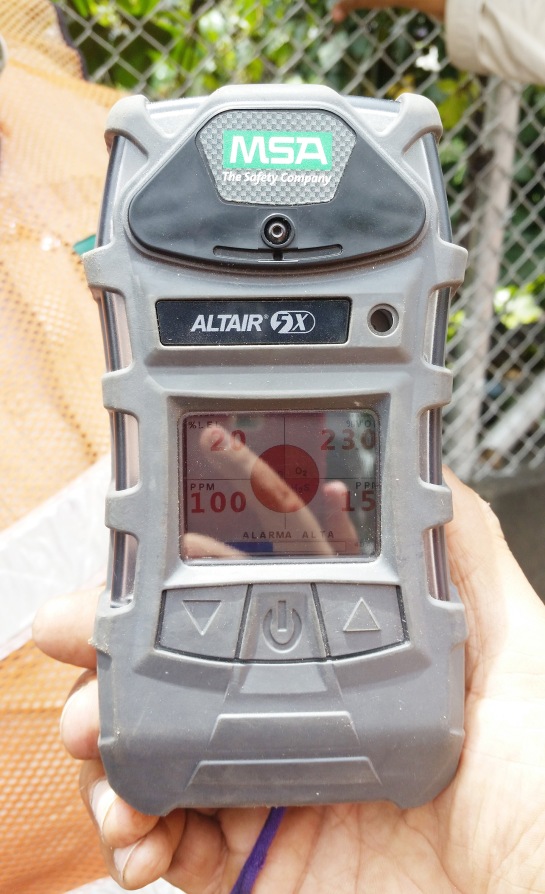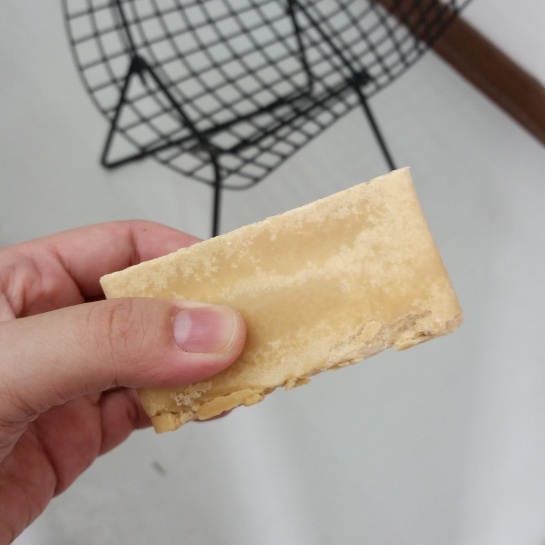The Sewer Soaperie: Cities, Oil and Human Behavior
One of the scourges of the modern city are fatbergs. You know what I’m talking about. Or wait, maybe you don’t (which is why I did this project). The big blobs of coagulated fats, oils, and toiletries that get stuck in the sewers, making urban flooding even worse. In a congested city like Manila that already experiences super typhoons caused by climate change, this means that a few minutes of rain translates into a few inches of water on the streets. If you’re unlucky enough to be out of the house when this happens—and if you’re commuting—it turns into a nightmare.
This was the situation I found myself in one day as I was stuck in the rain in Manila. No taxi will take you (well, a few did, then promptly threw me out as the rainwater level went from foot to ankle deep), so I was left with one of the last options—a pedicab (a tricycle or a tuktuk in other countries). And as I sat inside, cold and miserable with the pedaling driver talking about charging me three times the price and my rage further heated up by global warming, the water rushed into the pedicab and I, hugging my knees in a fetal position, vowed to turn this into a project.
People keep wondering about where I get my ideas for The Apocalypse Project and I tell them simply that on many days, I’ve already lived it.
Several months later, I finally have results whose journey transcended continents. In my not-so-recent residency in Medellin, Colombia, I was determined to scratch this creative itch and thankfully, a few phone calls later thanks to the Platohedro staff and boom, an engineer from Medellin’s EPM (the company that manages their sewers, or, ahem, alcantarillas) actually came over to the house and a few minutes later, I was looking into the sewers of Medellin.
I learned a lot about sewage and how different it is depending on the district. We were near a coffee factory and the sewage smelled like really old drip coffee and looked like it, too.
Interestingly, we could take readings about the sewage. This is a device that is supposed to check toxicity based on the particulates in the liquid.
Medellin doesn’t get flooded the way Manila does. One reason for the latter’s epic floods is the dumping of used cooking oil down the sewer systems. Eventually the liquid saponifies and clogs the city’s arteries. In Medellin, I learned that most people actually recycle the oil. Also, the population in Medellin isn’t as much as Manila’s.
I also got to research the alternative sewers that people throw their waste in. In Medellin, that would be the Medellin River, which is so polluted you could smell it from a distance.
Back in Manila, it was interesting to compare the struggles of both cities. Manila and Medellin have similar histories and so it is fascinating to see their journeys to development. Medellin is a bit ahead of the game, winning the 2016 Lee Kuan Yew World City Prize and 2013 City of the Year Award, thanks to its urban planning.
As I navigated through the neighborhoods of old Manila and Malate, I interviewed the managers of fast food chains on how they disposed of the cooking oil used to deep fry their chickens and fries, I was expecting to see hand wringing of we-don’t-know and why-are-you-even-asking, but it turns out, there are procedures that they do to conform to legislation set by the Department of Natural Resources. Their used oils are picked up by licensed agencies and people who recycle it for several purposes.
And so I was left scratching my head. If these restaurants actually do dispose of their oils properly, who is responsible for all the clogging? One possibility is the smaller canteens that are unregulated, and another possibility are the households themselves. How do you dispose of the remaining 1 tablespoon of cooking oil in your frying pan, leftover peanut butter, or other fatty acids embedded in our lifestyles? Pouring it down the drain might seem simple and harmless, but imagine millions of citizens thinking the same thing.
The project became an investigation on the journey of oil—the palm oil that is made from palm forests and used in households and commercial kitchens and end up in sewers or recycled. I researched the most common brands of cooking oil (palm oil was normally used), collected used cooking oil, and got grease from open pipes that were common in Manila. A few dozen saponification experiments later, I had several bars of soap for three types: palm oil (which needed too much caustic soda to saponify that I am actually suspecting of how pure it is, but that’s another story for another project), used palm oil (collected from restaurants), and sewer grease.
If you ever think of doing this yourself, well, kids, get your tetanus shots ready and make sure you’re suited up properly. Working with used cooking oil was always a surprise. The most information I could get was what food the oil was used to fry. They always came out different, and even though I used the same molds, there were some instances when the soap actually rose out of them, emerging like the spawn of Godzilla. There were also times when the soap didn’t look that great, because it was mixed with so many things, including water.
Layers of different types of fat were in these soaps. There was something faintly geological about them, don’t you think?
I boiled the sewage before turning them into soaps to kill as much bacteria and pathogens as possible. (I would still use gloves to handle these, though.) It’s both disappointing and fascinating to see them so normal-looking.
I also placed them in airtight engraved containers for the 1335Mabini exhibition.
It’s so great to get this off my chest, and I’m looking forward to continuing the project and looking at it from other perspectives.
Research for this project was made possible by a residency at Platohedro and Casa Tres Patios, with support from Arts Collaboratory and the Ministry of Culture of Colombia.
Thanks to Mr. Hemel Serna of EPM and his team for giving me administrative support in researching Medellin’s sewer systems.
Thanks to 1335Mabini for exhibition support.
Photos courtesy of Platohedro, Events by HD, 1335Mabini, and Catherine Sarah Young










